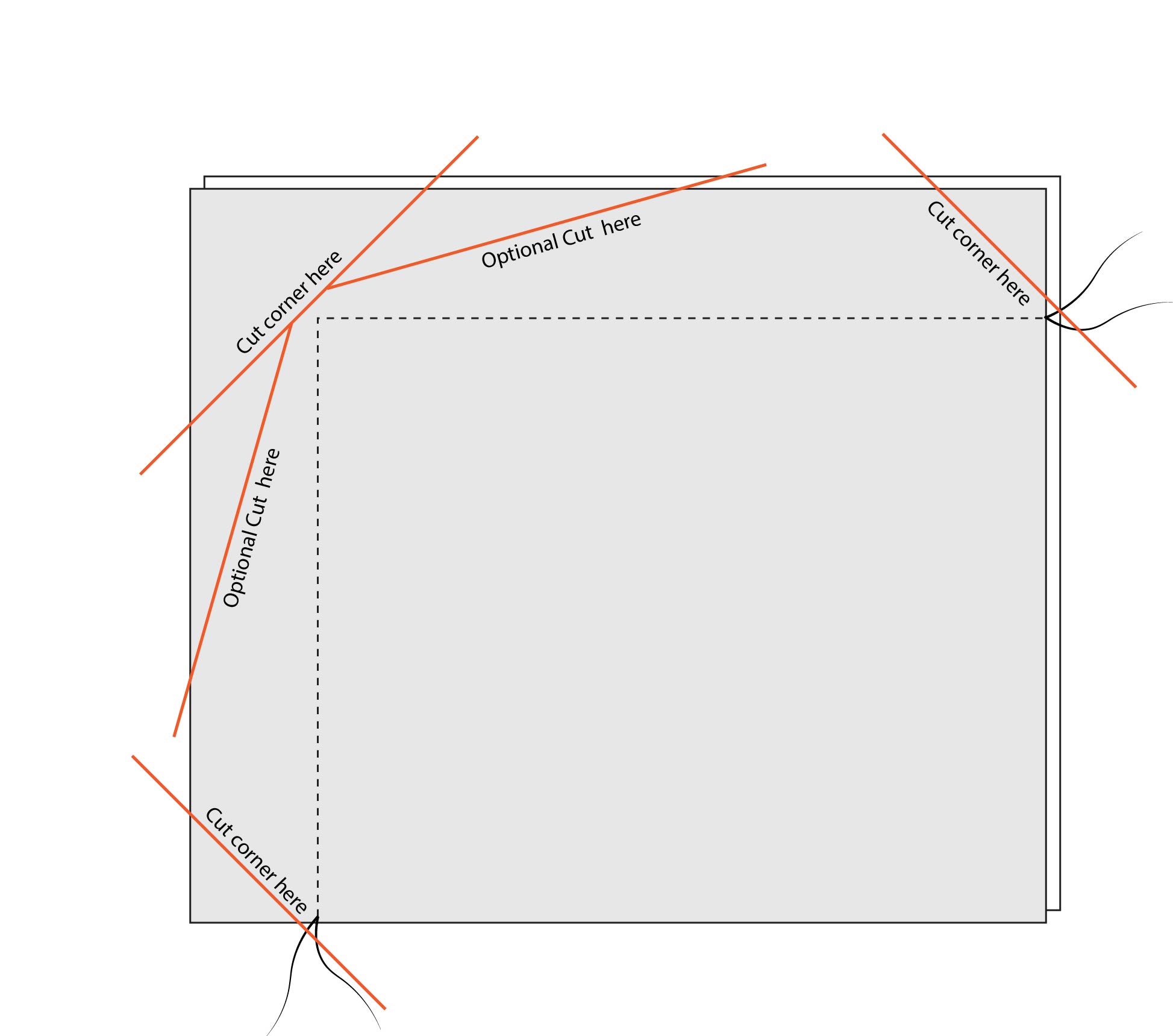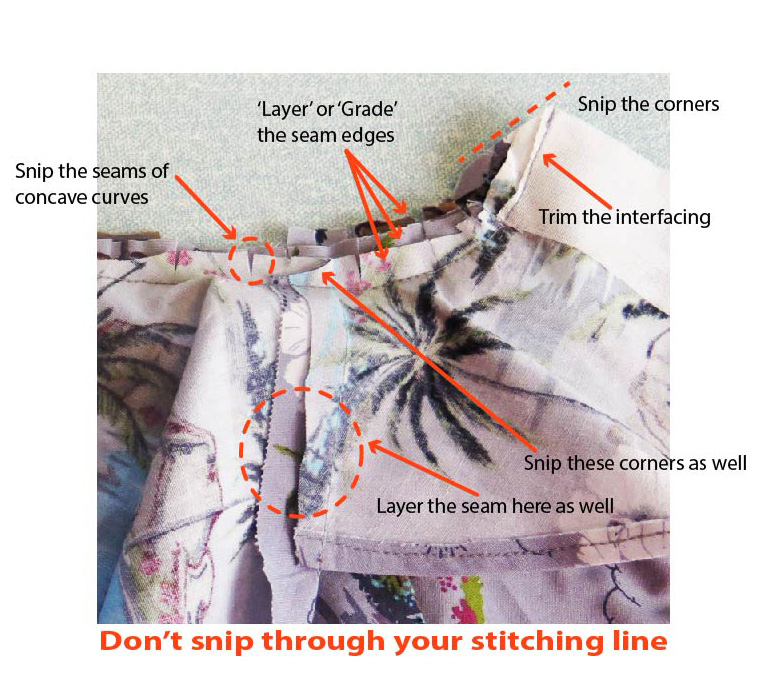Seams are not finished when you have sewn them.
However, long seams such as the side seams of a dress, the sleeve seams and even the waist seams will usually only need to have the edges neatened to prevent fraying. There are several ways to neaten these such as:
- Using an overlocker (serger) to neaten the edges.
- Enclosing the edge in bias binding.
- Sew a zig zag stitch along each edge of the seam.
- Use pinking shears that will make the edge zig zag shaped and less prone to fraying.
In addition to neatening the edges, seams that are curved will also need to be snipped so that they lay flat. Concave seams should be snipped nearly to the stitching line (But not through the stitching line of course). Convex seams should have small triangles cut out. The steeper the curve the more snips or cuts should be made – as shown in the diagram. They will also need to be layered, or trimmed.

Seams – especially those that will be enclosed such as for collars and cuffs, waistband and facings will need to be trimmed before turning them to the right side. This will reduce bulk at the corners and edges and prevent that ‘lumpy bumpy’ look. This is commonly called, trimming, layering or grading.
For these seams the first thing to do is to snip off the seam allowance at the corners. As below:

Now these internal seams will need to be trimmed. This should be done for all fabric types but is especially important for bulky fabrics. This is one of the most important processes needed to create a professional finish.
Leave the seam from the ‘outside layer’ without trimming and then trim each successive seam a little more. This reduces any hard edge that might appear when you press. You may also need to snip corners of joining seams. (as in the photograph)

Important points to remember are:
- Don’t cut through the stitching line.
- Don’t trim so close to the stitching line that the garment loses its strength.
- If the fabric is a very loose weave trim even less.
- If a seam will be under a lot of strain, double stitch along the stitching line to add strength. E.g the crotch seam on trousers.
- Cut away all excess fabric to reduce bulk.
- Trim interfacing right up to the stitching line.

My latest pattern ‘The Hawaiian Shirt’ for ages 3 – 10 years will be released in April 2023. Join my mailing list HERE and be the first to know when it is released.

